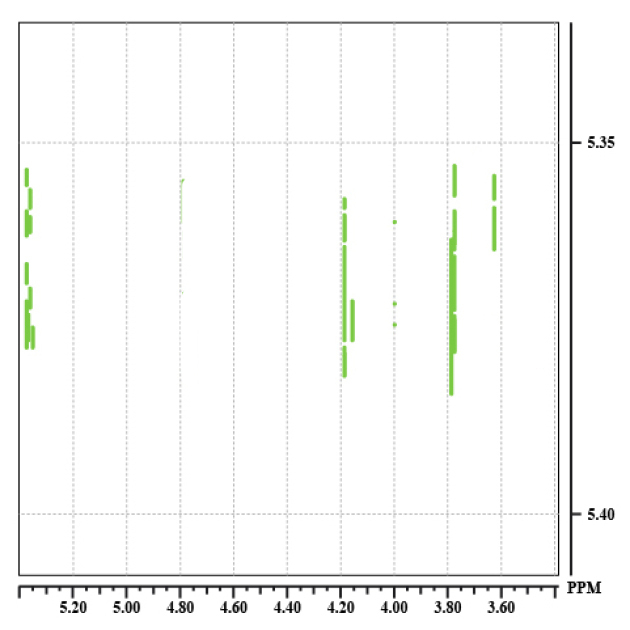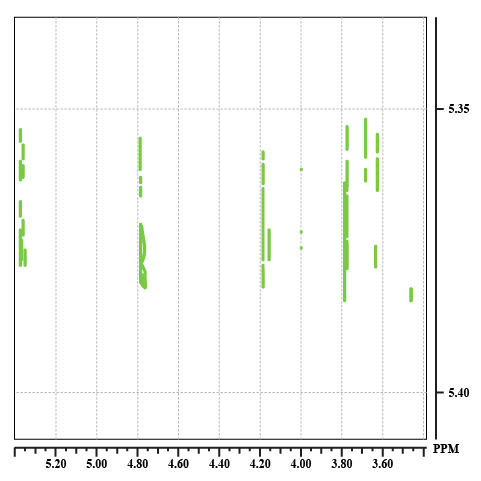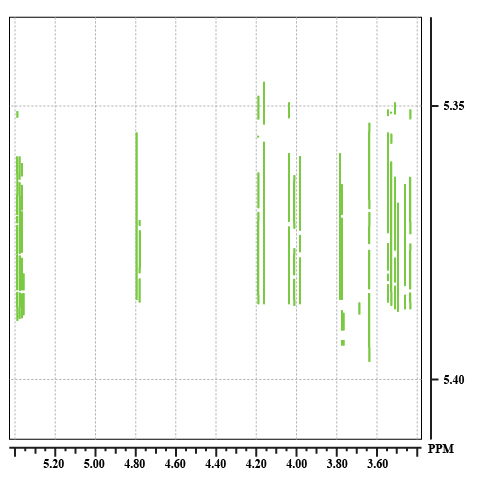TOCSY and ROESY
These experiments are characterized by a mixing time during which the magnetization of a spin A, submitted to a radio wave frequency field Bl is transferred to a spin linked to A either by a dipolar coupling or by a scalar coupling. During the mixing time the magnetizations are locked according to one direction of the space defined by the direction of the field Bl and the spin frequency shifting versus the main component. The block in the spin system is commonly named spin-lock[1].
TOCSY ou HOHAHA :
This method allows to demonstrate scalar couplings. The pulse sequence scheme is given Fig. 23. The first 90°x impulsion rotates the magnetization vectors in the xOy plane, in which they freely evolve during the time tl, under the influence of their chemical shift and the scalar coupling constants. We apply then a spin lock on the x axis, that means a low power impulsion or set of impulsions whose duration represents the mixing time tm. During this time, the spin coherence of the system is exchanged. By increasing the mixing time we increase the number of the visible transitions. That is to say that within the same experiment, we get the informations of a COSY, of a LR COSY and of a relayed COSY. The pulse sequence widely used is base upon the MLEV-17 sequence which contains a set of 17 pulses[2].


The spectrum 10 shows the result of three different mixing time for the saccharose (Fig.29). These are given in milliseconds (20, 60, l00 ms). For each mixing time, we see the appearance of new correlation spots. There is thus an increase of the number of relays with the spin lock time. These ones correspond then to long range correlations.
Spetrum 10: 20ms, 60 ms, 100ms.



ROESY ou CAMELSPIN :
The aim of the dipolar correlation experiments in two dimensions is to take advantage of the vicinity in space of some nuclei. The result of this kind of experiment is a 2D map in which the signals outside of the diagonal arise from the Over Hauser enhancement effect between two space coupled nuclei[1] (Fig.24).

In this case, we apply a spin-lock onto the y axis. The correlation peaks arising from the ROE effect are on the opposite sign compared to the diagonal one their intensity is different from 0. However, the correlation peaks coming from a chemical exchange are of the same sign than the crossing one. The ROESY experiment allows by this way the separation of the contributions coming from the exchange and those coming from the dipolar interactions. The ROESY sequence is thus complementary of the NOESY one and it is more often used for the structural determination of the small molecules.
